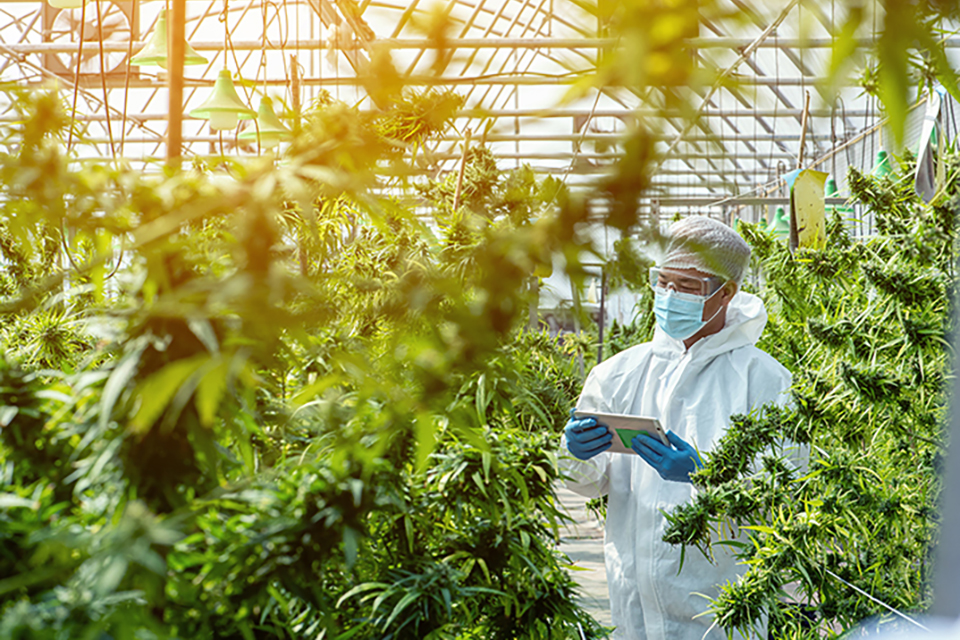
Trichomes play a crucial role in the potency and overall quality of cannabis flowers, making it essential for home growers to understand how to boost trichome production before harvesting. Whether you are a seasoned cultivator or a novice enthusiast, Kind Seed Co will help you unlock the full potential of your cannabis plants by maximizing trichomes.
Understanding Trichomes
Understanding what trichomes are and their role in cannabis plants will undoubtedly arm you with the knowledge necessary to improve your harvest.
What Are Trichomes?
Trichomes are tiny, crystal-like protrusions that cover the leaves and buds of the cannabis plant. This microscopic resin factory acts as the plant’s defense mechanism against potential threats, and amazingly, it's also the part of the plant richest in cannabinoids, terpenes, and flavonoids, which are the chemical compounds that contribute to the therapeutic properties of cannabis. Trichomes are usually clear or cloudy and become more amber as the cannabis flower matures. The density, color, and condition of trichomes can indicate the plant's maturity and potency.
Role of Trichomes in Cannabis Plants
Trichomes serve multiple essential roles in the growth and development of cannabis plants. First, they function as a protective shield, making the plant less appealing to insects and animals due to their bitter taste and strong aroma. Second, trichomes are nature's own sunscreen, protecting the plant from harmful UV rays. Lastly, and most importantly for cannabis enthusiasts, trichomes are responsible for producing and storing cannabinoids, which are the compounds that give cannabis its unique effects. They contain high concentrations of THC, CBD, and other active medicinal compounds.
Techniques to Boost Trichome Production
When you have a clear understanding of trichomes and their functions, you can begin optimizing various conditions to boost trichome production before harvesting cannabis flowers.
Light Optimization
Interestingly, the type and amount of lighting your cannabis plants receive can significantly impact trichome production. By manipulating the light spectrum, you can stimulate your plants to produce more trichomes. Violet, blue, and ultraviolet light are known to increase trichome density. Adjusting the duration and intensity of light exposure can also make a significant difference. Strong, direct light exposure can cause trichomes to produce more resin as a defense mechanism against damage.
Nutrient Management
Nutrients play a critical role in trichome development. Key nutrients such as potassium, phosphorus, and magnesium are essential for healthy, resinous trichome production. Specific nutrient supplements enhance trichome growth, such as supplements rich in amino acids and carbohydrates.
Environmental Factors
Temperature and humidity control are also vital factors. Lower temperatures and humidity levels during the final stages of flowering can trigger more trichome production as the plant attempts to protect itself. Maintaining good air circulation and proper CO2 levels is equally important to support optimal photosynthesis and trichome development.
Genetic Considerations
Selecting strains known for high trichome production can naturally increase your yield. Cultivators can also use breeding techniques to enhance trichome production in future generations of plants.
Best Practices for Home Growers
When it comes to harvesting for maximum trichome development, timing is everything. Too early, and trichome production may not have peaked. Too late, and the potency may start to decrease. Post-harvest handling is also crucial, as rough handling can damage fragile trichomes. Therefore, always handle your buds gently to ensure the precious trichomes remain intact.
Proper Harvesting Techniques
To ensure maximum trichome preservation, it is important to apply the correct harvesting techniques. Start by cutting the branches of your cannabis plants instead of the entire plant. This method makes it easier to manage the plants during the trimming and drying process.
When it comes to trimming, you have two options: wet or dry trimming. Growers perform wet trimming immediately after harvest and before drying, making it easier to cut and shape the buds. However, growers perform dry trimming after the drying process, which can help preserve more trichomes due to its slower drying process.
Drying and curing are also crucial steps in preserving trichomes. Dry your cannabis in a dark, humidity-controlled environment. Rapid drying can degrade trichomes and result in less potent flowers. Proper curing, which involves storing the buds in airtight jars and maintaining an optimum humidity level for a few weeks, can further enhance the potency and flavor of cannabis by fully developing its cannabinoid and terpene profiles.
By employing these careful harvesting techniques, you can efficiently protect and boost the trichomes in your cannabis plants, leading to a higher-quality product.
Importance of pH Balance in Trichome Production
Regulating the pH levels of your growing medium is another important factor to consider when aiming to boost trichome production. Ensuring that the pH balance is optimal allows the plants to absorb the necessary nutrients better.
In general, cannabis plants thrive in slightly acidic conditions. For hydroponic systems, maintain a pH level around 5.5-6.5. If you're growing in soil, aim for a pH level of 6.0-7.0. Regular monitoring and adjustments can help maintain this balance. Notably, pH imbalance can lead to nutrient lockout, which may hinder the development of trichomes and overall plant health.
Remember that each strain may have a specific pH preference. So, it's always a good idea to do some research about the strain you're cultivating before making pH adjustments. A stable pH provides a conducive environment for trichome growth and overall plant development.
Maximizing Cannabis Trichome Production
There are several strategies to boost trichome production before harvesting cannabis flowers, including light optimization, nutrient management, environmental control, and careful genetic selection. As a home grower, understanding these techniques will allow you to improve the quality and potency of your cannabis flowers. But remember, every plant, strain, and growing environment is unique. Don’t be afraid to experiment, observe, adjust, and share your cultivation experiences with other cannabis enthusiasts to continually hone your skills. Happy growing!






